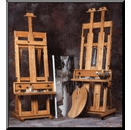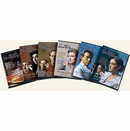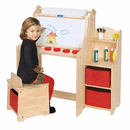News from the Holy Land: Theory and Practice of Reporting Conflict Video (DVD)
Product Description:
News from the Holy Land: Theory and Practice of Reporting Conflict. Is Western media coverage of the Israeli/Palestinian conflict hindering the peace process? This hard-hitting program says yes, arguing that news reports focusing on violence without sufficiently addressing the causes promote bias and polarize public opinion. Examples of TV news stories that could provide a more accurate reflection of what is taking place in Israel and the West Bank—and, by extension, anywhere a vicious cycle of violence exists—are featured. An excellent jumping-off point for a deeper understanding of the complexities and nuances of TV journalism and the ongoing violence in the Holy Land. (51 minutes).
Customer Reviews
News from the Holy Land
Theory and Practice of Reporting Conflict
A Peace Journalism Video
Teaching Notes for Discussion and Analysis
Contents
1. USING THE VIDEO IN THE CLASSROOM . . . [leaders]
2. WHO IS THIS FOR?
3. OVERVIEW
4. KEY POINTS
5. FILM INDEX – time code for who is speaking when and where in the film
6. FILM VIEWING QUESTIONS – detailed questions to ask after playing short
excerpts from the film
7. DISCUSSION NOTES – to lead a two-hour dialogue about the video, inspired by
sections of the film
Suggested discussion issues specifically designed for the following groups:
· Civil society groups & NGOs
· ‘A’ level Courses
· Undergraduate & Postgraduate courses
8. THE PEACE JOURNALISM MODEL – Johan Galtung’s original table
9. COMMENTARY ON THE TWO VERSIONS – an excerpt from Peace Journalism
Hawthorn Press, 2005
10. IDEAS FOR BIGGER ASSIGNMENTS
11. BACKGROUND NOTES
12. GLOSSARY
13. FURTHER READING
14. WEBPAGES
1. Using the video in the classroom or with groups
· View the video before showing it to your pupils/students/participants.
· Go through the teaching notes to select the questions/exercise most suited to your
pupils/students/participants.
· Photocopy any of the background notes you feel are necessary. Some are suggested for use as
handouts after initial discussions.
· Encourage active listening. Not everyone will agree with the content of the video and it could
generate an emotional response from some. It is suggested that you agree ground rules with the
group to ensure everybody has an opportunity both to speak and to be listened to.
· Have students keep a journal. This is an effective way for them to explore their own shifting
attitudes and opinions towards both the Israeli-Palestinian conflict and the media.
2. Who is this for?
· NGOs working in the Middle East wanting to campaign for better coverage, with questions and
suggestions for preparing campaigns in the media.
Civil society groups – peace groups; Arab and Palestinian support groups; Jewish groups
working for peace. The questions are designed to lead into an ongoing project for the group,
either supporting grassroots peace actors in the region or designing a media campaign.
· ‘A’ level courses – possibly Media, Citizenship, English, Politics and History. There are detailed
comprehension questions to facilitate pupils’ engagement with key concepts about both the
conflict and the way the media works. These are followed by a broader, more creative set of
exercises and ideas for written work.
· Undergraduate courses – Journalism, Media & Communications, Politics, International Relations,
Peace Studies, Conflict Resolution.
· Postgraduate courses – Journalism, Media & Communications, International Relations, Peace
Studies, Conflict Resolution, Development.
· There are class discussion exercises and also longer assignments for use by graduate and
undergraduate tutors.
3. Overview
The film is an illustrated call for change in the way the Israel-Palestine conflict is presented to British
news audiences. It opens up a set of questions about how any conflict is reported in the media.
The documentary shows how the coverage of the past three years has created a pattern of omission
and distortion, to the point where it exerts a distorting influence on political process.
Jake and Annabel showcase examples of news stories that would help to correct thIS distortion and
provide the British people with a more accurate reflection of what is taking place in Israel and on the
West Bank.
The film begins with a suicide bombing in Jerusalem and two different approaches to the same news
story. This helps to give a broader perspective and some context to the Israel-Palestine conflict. Five
further examples of news stories follow, with detailed analysis of each.
The analytical tools of Peace Journalism can be used for evaluating how other conflicts are covered,
not just that between Israel and the Palestinians.
4. Key Points
· News focuses on violent events and ignores crucial processes such as such as the everyday reality
of life for millions of Palestinians under Israeli military occupation. This gives a misleading view of
what is happening in the Middle East conflict, and why it is happening.
· Journalists need to find creative ways to convey these processes and the underlying issues of
structural and cultural violence which are fuelling the conflict.
· A creative reporting strategy would illuminate options for change and possible long-term solutions to key issues in the conflict.
· Moderate voices – representing majority opinion in both communities – are routinely missing from
news reports, giving the impression that all Israelis and Palestinians hate each other.
· Current international news reporting is polarising in its approach and likely to exacerbate the conflict.
and more...
Theory and Practice of Reporting Conflict
A Peace Journalism Video
Teaching Notes for Discussion and Analysis
Contents
1. USING THE VIDEO IN THE CLASSROOM . . . [leaders]
2. WHO IS THIS FOR?
3. OVERVIEW
4. KEY POINTS
5. FILM INDEX – time code for who is speaking when and where in the film
6. FILM VIEWING QUESTIONS – detailed questions to ask after playing short
excerpts from the film
7. DISCUSSION NOTES – to lead a two-hour dialogue about the video, inspired by
sections of the film
Suggested discussion issues specifically designed for the following groups:
· Civil society groups & NGOs
· ‘A’ level Courses
· Undergraduate & Postgraduate courses
8. THE PEACE JOURNALISM MODEL – Johan Galtung’s original table
9. COMMENTARY ON THE TWO VERSIONS – an excerpt from Peace Journalism
Hawthorn Press, 2005
10. IDEAS FOR BIGGER ASSIGNMENTS
11. BACKGROUND NOTES
12. GLOSSARY
13. FURTHER READING
14. WEBPAGES
1. Using the video in the classroom or with groups
· View the video before showing it to your pupils/students/participants.
· Go through the teaching notes to select the questions/exercise most suited to your
pupils/students/participants.
· Photocopy any of the background notes you feel are necessary. Some are suggested for use as
handouts after initial discussions.
· Encourage active listening. Not everyone will agree with the content of the video and it could
generate an emotional response from some. It is suggested that you agree ground rules with the
group to ensure everybody has an opportunity both to speak and to be listened to.
· Have students keep a journal. This is an effective way for them to explore their own shifting
attitudes and opinions towards both the Israeli-Palestinian conflict and the media.
2. Who is this for?
· NGOs working in the Middle East wanting to campaign for better coverage, with questions and
suggestions for preparing campaigns in the media.
Civil society groups – peace groups; Arab and Palestinian support groups; Jewish groups
working for peace. The questions are designed to lead into an ongoing project for the group,
either supporting grassroots peace actors in the region or designing a media campaign.
· ‘A’ level courses – possibly Media, Citizenship, English, Politics and History. There are detailed
comprehension questions to facilitate pupils’ engagement with key concepts about both the
conflict and the way the media works. These are followed by a broader, more creative set of
exercises and ideas for written work.
· Undergraduate courses – Journalism, Media & Communications, Politics, International Relations,
Peace Studies, Conflict Resolution.
· Postgraduate courses – Journalism, Media & Communications, International Relations, Peace
Studies, Conflict Resolution, Development.
· There are class discussion exercises and also longer assignments for use by graduate and
undergraduate tutors.
3. Overview
The film is an illustrated call for change in the way the Israel-Palestine conflict is presented to British
news audiences. It opens up a set of questions about how any conflict is reported in the media.
The documentary shows how the coverage of the past three years has created a pattern of omission
and distortion, to the point where it exerts a distorting influence on political process.
Jake and Annabel showcase examples of news stories that would help to correct thIS distortion and
provide the British people with a more accurate reflection of what is taking place in Israel and on the
West Bank.
The film begins with a suicide bombing in Jerusalem and two different approaches to the same news
story. This helps to give a broader perspective and some context to the Israel-Palestine conflict. Five
further examples of news stories follow, with detailed analysis of each.
The analytical tools of Peace Journalism can be used for evaluating how other conflicts are covered,
not just that between Israel and the Palestinians.
4. Key Points
· News focuses on violent events and ignores crucial processes such as such as the everyday reality
of life for millions of Palestinians under Israeli military occupation. This gives a misleading view of
what is happening in the Middle East conflict, and why it is happening.
· Journalists need to find creative ways to convey these processes and the underlying issues of
structural and cultural violence which are fuelling the conflict.
· A creative reporting strategy would illuminate options for change and possible long-term solutions to key issues in the conflict.
· Moderate voices – representing majority opinion in both communities – are routinely missing from
news reports, giving the impression that all Israelis and Palestinians hate each other.
· Current international news reporting is polarising in its approach and likely to exacerbate the conflict.
and more...
Copyright © 2002-2025 Madison Art Shop™ LLC. All Rights Reserved.

















